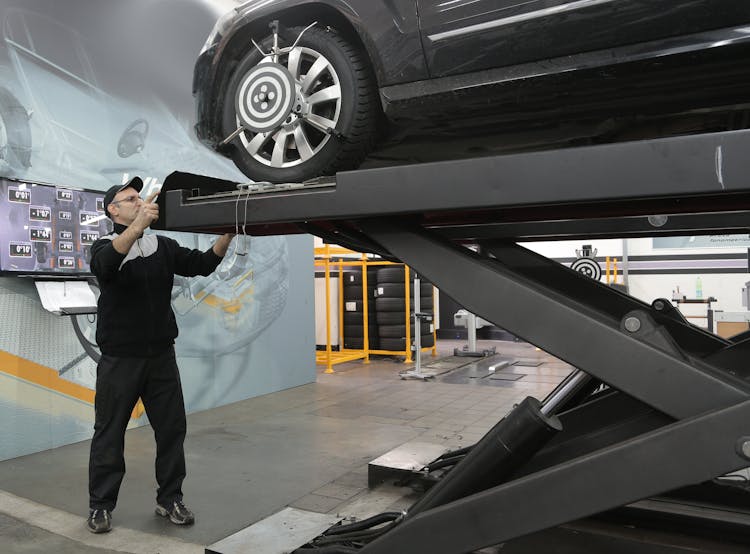All Categories
Featured
Table of Contents
The check engine light is a warning sign from your car’s onboard diagnostics system, indicating there is an issue with the vehicle's emission control system or another critical internal functionality. Whenever this light illuminates, it’s crucial to take it seriously. As a first step, many vehicle owners look for ways to reset the check engine light. There are several methods to accomplish this. Using an OBD-II scanner is the most straightforward approach. This device connects to the vehicle's OBD-II port, allowing the user to read diagnostic trouble codes (DTCs) and clear them when appropriate. If you can't access a scanner, you might consider disconnecting and reconnecting the battery, although this method is less reliable as it could reset additional settings beyond the check engine light. Additionally, some people find that simply driving their vehicle for a short period can turn off the light if the issue has resolved itself. However, it’s essential to remember that a persistent check engine light could indicate a serious problem that needs professional diagnosis.
Another effective method involves a more thorough examination of what's triggering the light. If you've recently made repairs to your vehicle or replaced a faulty part, the light may take some time to reset. In most circumstances, it’s a good idea to monitor the vehicle for a few days to ensure that the issue doesn't return. If the light does come back on, it’s crucial to take it to an automotive specialist who can provide an accurate diagnosis. Ignoring this light can lead to significant damage over time, as underlying issues might escalate without proper attention.
Using an OBD-II Scanner
Employing an OBD-II scanner presents numerous advantages for vehicle owners. This handheld device connects directly to your car's OBD-II port, which is typically located under the dashboard near the steering column. Upon connection, the scanner retrieves diagnostic trouble codes (DTCs) that indicate the specific malfunctions affecting your vehicle. Not only do these codes help identify the problem, but they can also provide details concerning the severity and location of the issue. Investing in an OBD-II scanner can save you both time and money in the long run, allowing you to diagnose problems early and address them before they escalate into more significant repair costs.
The use of OBD-II scanners is particularly beneficial for car enthusiasts or anyone who frequently undertakes DIY vehicle maintenance. Moreover, many modern scanners come equipped with advanced features such as live data streaming, readiness status, and vehicle system scanning, offering a deeper understanding of your vehicle's health than ever before. When shopping for an OBD-II scanner, consider factors such as compatibility with your vehicle model, ease of use, and range of features, as various models on the market serve diverse needs and budgets.
Recognizing Regular Check Engine Light Problems
Understanding the common issues that cause the check engine light to illuminate is essential for every vehicle owner. One of the most prevalent causes is a loose gas cap. While it may seem insignificant, a loose or missing gas cap can trigger the light by allowing vapors to escape from the fuel system. Thankfully, this issue can often be resolved by simply tightening or replacing the gas cap. Other issues entail more intricate mechanical failures, such as a faulty oxygen sensor, which is responsible for measuring unburned oxygen in the exhaust. A malfunctioning oxygen sensor can lead to reduced fuel efficiency and increased emissions, making it an essential component to monitor.
Another frequent culprit is a failing catalytic converter. This critical part plays a vital role in reducing harmful emissions and can considerably impact engine performance when malfunctioning. Symptoms of a failing catalytic converter may include decreased acceleration, an unusual smell, or poor fuel economy. Similarly, a malfunctioning mass airflow sensor, which measures air entering the engine, can cause various engine performance issues and should be investigated. On top of these, faulty spark plugs or wires are known to create ignition problems, potentially resulting in starting issues or rough engine performance, leading to the alarming check engine light.
Moreover, electrical issues within the vehicle, such as battery problems, could also trigger the check engine light. It’s crucial for automobile owners to familiarize themselves with these commonplace issues and understand that while some might seem minor, timely attention can prevent more severe complications down the line.
Wrapping Up
In summary, understanding how to reset the check engine light and utilizing an OBD-II scanner can significantly aid in diagnosing and addressing common automotive issues. When the check engine light comes on, check for simple problems like a loose gas cap first. Nevertheless, if the light remains illuminated or if you experience any persistent issues, don’t hesitate to seek professional assistance. Regular maintenance is your vehicle's best friend; ensuring optimal performance and longevity depends on proactive care and timely repairs. Always remain vigilant and attentive to your car’s signals, and you’ll keep it performing well for years to come.
A proper balance of self-diagnosis with professional intervention ensures that you stay informed about your vehicle’s condition. So, whether you’re going to invest in an OBD-II scanner or regularly check for signs of trouble, always prioritize vehicle health and safety.

Check Engine Light Reset: Addressing Underlying Issues
Table of Contents
Latest Posts
The Illusion of Connection: Tackling Digital Age Isolation
How Katteb AI Can Transform Your Content with Reliable Fact-Checking
Meet, Match, and Mingle: Exploring the Grid Dating App
More
Latest Posts
The Illusion of Connection: Tackling Digital Age Isolation
How Katteb AI Can Transform Your Content with Reliable Fact-Checking
Meet, Match, and Mingle: Exploring the Grid Dating App